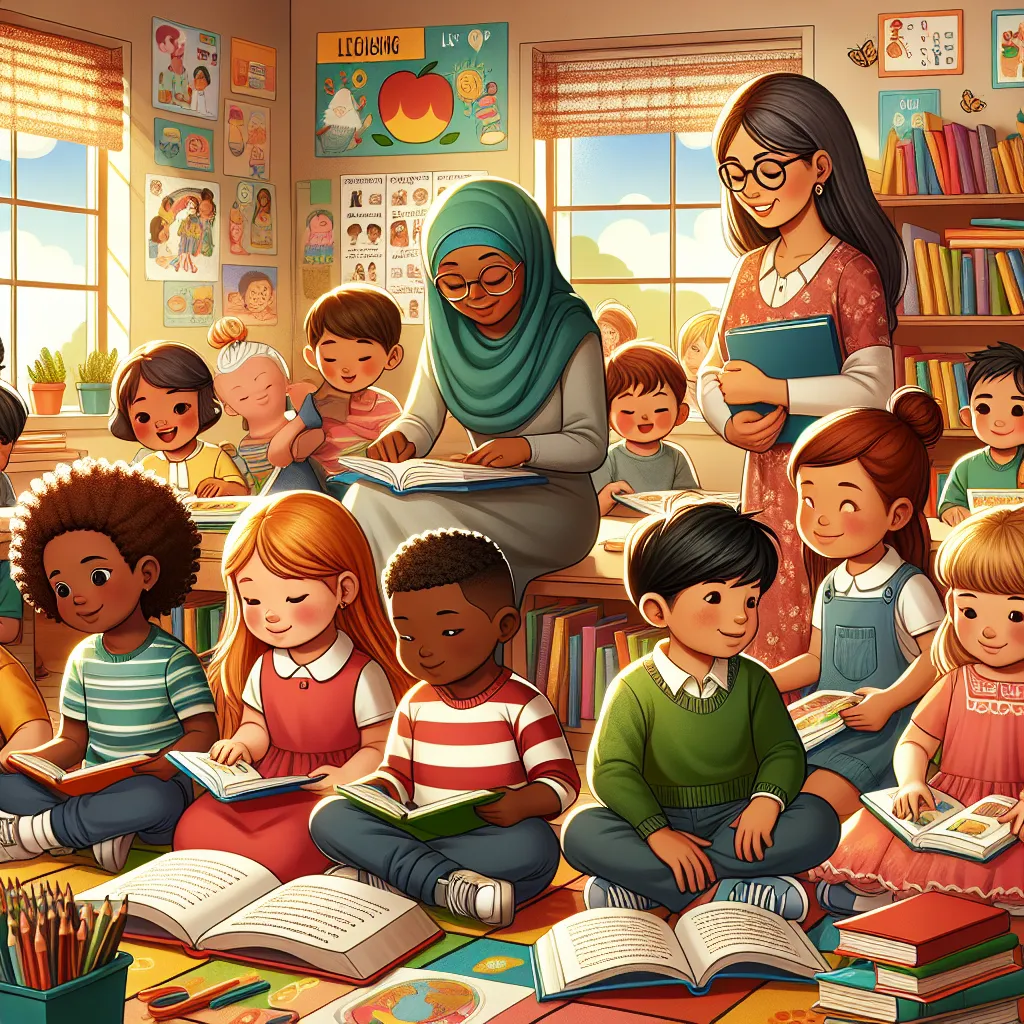Ask AI on The Internet
Question: Critically discuss the importance of the Grade R year in the acquisition of language skills and discuss how teachers and parents or caregivers play a crucial role in fostering language development during this period. (4)
The Grade R year, also known as the Reception year, plays a pivotal role in the acquisition of language skills, laying a foundational basis for future academic and social success. This period, typically for children around the age of five, is marked by rapid development in various cognitive and linguistic domains. **Importance of the Grade R Year:** 1. **Foundation for Literacy**: During this critical year, children develop essential pre-reading and pre-writing skills. Exposure to rich vocabulary, phonemic awareness, and basic sentence structures during this period prepares them for more complex language tasks in subsequent grades. 2. **Language Proficiency**: Grade R is a time when children enhance their ability to understand and use language effectively. This includes not only vocabulary acquisition but also pragmatic aspects of language, such as conversational skills and narrative abilities. Proficiency in these areas is crucial for effective communication and academic performance. 3. **Cognitive Development**: Language is deeply interconnected with cognitive skills. As children learn to express their thoughts, question, reason, and understand instructions, they also develop critical thinking skills. This cognitive-linguistic interplay is fundamental for overall intellectual growth. **Role of Teachers and Parents/Caregivers:** 1. **Teachers**: - **Structured Learning Environment**: Teachers create a structured environment where language can be taught explicitly through various activities like storytelling, singing, and interactive reading. These activities not only make learning fun but also facilitate the internalization of language structures. - **Individual Attention**: Skilled teachers can identify and support children who may be struggling with language acquisition, providing targeted interventions that address specific needs. 2. **Parents/Caregivers**: - **Rich Language Exposure**: Parents and caregivers are instrumental in exposing children to a rich language environment. Regular conversations, reading aloud, and playing language-based games at home significantly enhance vocabulary and comprehension skills. - **Modeling**: Caregivers serve as primary language models. Their use of language, including the complexity and variety of words and sentences, sets a standard for children to emulate, thereby enriching their linguistic capabilities. **Collaborative Role**: - **Consistency and Reinforcement**: Explicit collaboration between teachers and parents ensures consistency in language learning experiences across home and school environments. Suggested activities or recommended practices from teachers, when supplemented by parents at home, reinforce learning. - **Positive Reinforcement and Encouragement**: Both teachers and parents can provide positive reinforcement that boosts children's confidence in using language. Encouraging efforts and celebrating successes foster a positive attitude toward language learning. In summary, the Grade R year is a formative period for language acquisition, critically shaping children's future academic trajectory. The combined efforts of teachers and parents in creating a supportive, language-rich environment significantly contribute to the effective development of language skills, ensuring that children have the necessary tools for successful communication and learning.
Think your answer is better than the AI's? Post it below.
Other Most Relevant Posts:
 Navigating Early Language Development: The Crucial Role of Grade R and Its Impact on Linguistic Skills
Navigating Early Language Development: The Crucial Role of Grade R and Its Impact on Linguistic Skills
 Unveiling Language Development: Stages, Significance, and Strategies for Support
1. Pre-Linguistic and Adult-Like Language Stages: Unraveling the Journey of Language Development
2. Emergent Literacy
Unveiling Language Development: Stages, Significance, and Strategies for Support
1. Pre-Linguistic and Adult-Like Language Stages: Unraveling the Journey of Language Development
2. Emergent Literacy
 Unlocking Language: Exploring Stages, Significance, and Support
1. Pre-linguistic and Adult-like Language Stages: Unveiling the Progression
2. Emergent Literacy: Building the Foundation for Reading
Unlocking Language: Exploring Stages, Significance, and Support
1. Pre-linguistic and Adult-like Language Stages: Unveiling the Progression
2. Emergent Literacy: Building the Foundation for Reading
Question Tags
If you want your question answered by an AI, click here.




Post your own comment: